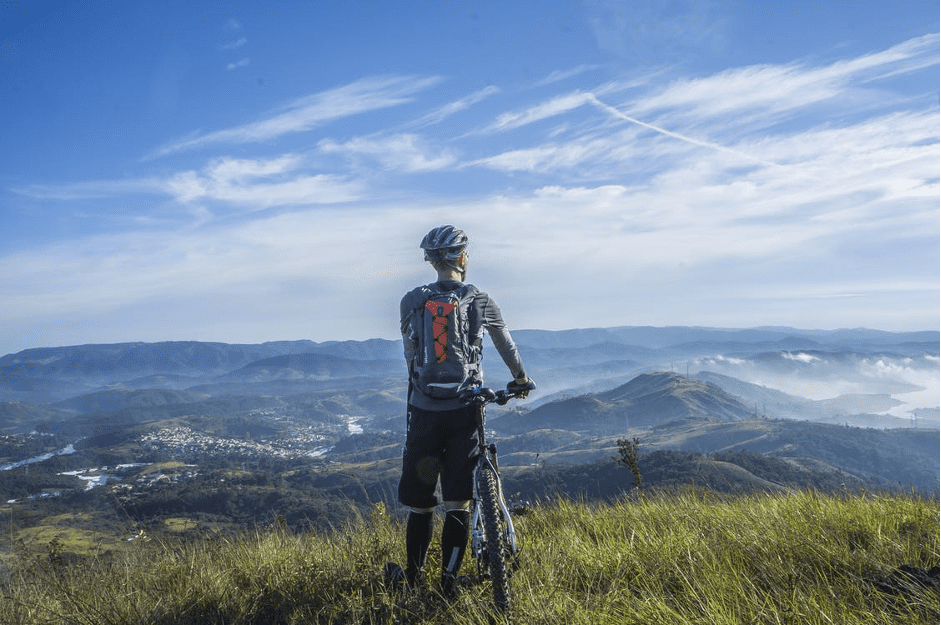Looking for safety tips when biking? Read this article to learn more!
The thrilling activity of mountain biking is becoming more popular nowadays. This thereby encourages riders to ride their bicycles off-road and on unpaved terrain.
Mountain biking is indeed a fantastic way to get some exercise and see the sites, but it has safety concerns. Hence, when biking in mountainous areas all by yourself, having some tips in your pocket will aid your safety.
As a result, to help you out, we outline some safety tips just for you in this article. So next time you go for that amazing ride, you have some pointers in your head to ensure your safety.
Every Bicyclist Should Follow These Safety Guidelines
Read on to learn about the safety tips every mountain biker should follow.
- When Cycling Down The Mountain, Do Not Rush
Most accidents occur on inclines when you ride down mountainous areas.
Your bike may develop movement even when you’re not pedaling, which means it may collide with barriers more forcefully than it would on flat or sloping ground. It’s crucial to stay alert, particularly if you’re in an unknown area.
- The Shape of The Bike
If your bicycle is in poor shape, you could also endanger yourself. Inspect your bike for damaged components before riding.
No matter what bike you choose, the more you ride it, the more service it will need. No matter how costly or cheap your bike is, it must be maintained.
Riding on the road frequently may wear down a bike, particularly in rough and damp weather. It’s crucial to keep the moving parts of your bike oiled and at least moderately clean. A bike that has been well-maintained works efficiently and has more durable parts.
Ensure the brakes are still in working order and examine the complete drive chain and pedals. Check the wheels for issues and the tires for splits in the rubber and proper inflation.
- Put On A Helmet
There is a very valid reason why the large bulk of mountain bikers wear helmets. Considering the nature of the exercise, falling over is likely to happen at some point.
If this occurs while you’re moving quickly downhill, you risk suffering significant injuries.
A brain injury can be lethal, resulting in permanent impairment or immobility, as well as other injuries, including shattered bones and gashes.
In certain circumstances, a helmet may not be able to stop such severe injuries, but in others, it still might.
- Bring First Aid Supplies
Anecdotal information indicates that several mountain bikers do not travel with a first aid package.
A triangular bandage can be utilized to create a sling if you break your collarbone, which is a frequent accident among mountain bikers. Plasters, latex gloves, antiseptic wipes, and medications can all be very helpful.
- Dress Accordingly
Cycling-specific waterproofs are made to fit snugly and move freely to save drag and prevent getting caught in the bike’s tire. There is a wide variety of biking-specific clothes available.
Even regular mountain bikers should take into account a few necessities. What is frequently a sweaty exercise may be considerably more enjoyable by wearing walkable base layers, undergarments, top layers, and mid-layers.
- Stay Hydrated
Keep plenty of water on you at all times, particularly in summer and on longer journeys.
Several mountain bikers utilize hydration packs, which are compact, specially built backpacks that house a storage tank with a drinking tube and a capacity of two to three liters.
Water bottles held in frame-mounted bottle cages, which are increasingly common among mountain bikers, can easily be misplaced when cycling off-road, but hydration packs let you store more water.
Before beginning your bike, make sure you are well-hydrated.
- Don’t Wander Off
Today, many bikers use GPS for navigating, and various biking-specific GPS devices are available. Navigating can be accurate and simple, thanks to GPS systems.
On the negative side, they are not affordable and are not perfect. Mountain bikers in uncharted territory can benefit just as much from a compass and a map as hikers without GPS, though few bikers appear to carry compasses.
Outside of trailheads, numerous mountain biking trails have minimal to no waymarking, making it quite simple to get lost, particularly in forested areas. You may avoid becoming lost by using a compass.
- Take Care Of Your Eyes
Many cyclists wear shades to help block on sunny days and protect themselves from flying muck, debris, and insects, mainly on fast descents.
Numerous bike-specific shades are available, including replaceable lenses with various color options for various lighting circumstances.
You can also look into biking blogs for more ideas on safe bike riding in mountainous areas and better understand the tips mentioned above.
Conclusion
Overall, we outlined safety tips every mountain baker should follow. We hope you can get some inspiration from the tips mentioned above and can bike safely and enjoy an amazing ride throughout the mountain trail.
Since you looked into “Safety Tips Every Mountain Biker Should Follow” you might be interested in information about other different types of exercises available.
Frequently Asked Questions
Are Mountain Bikes Secure?
Bike riding is a sport that can be extremely risky and result in serious injuries or worse.
Regardless of where you cycle or how thoroughly you know the terrain, you must never push your cycling abilities beyond what is comfortable for you.
What Kinds of Injuries Are There in Mountain Biking?
Mountain biking increases the risk of shoulder dislocation. Mountain bikers are particularly vulnerable to mouth injuries and other types of facial trauma.
What Will Occur If You Crash Your Bike?
Contact an ambulance right away and do not attempt to get up on your bike if you cannot see or move any of your body parts after crashing your bike.
If every body part is functioning normally as well as your mind is clear, go somewhere safe and check your wounds.
Featured photo by Glenn
Sponsored Post
Support us!
All your donations will be used to pay the magazine’s journalists and to support the ongoing costs of maintaining the site.
Share this post
Interested in co-operating with us?
We are open to co-operation from writers and businesses alike. You can reach us on our email at [email protected]/[email protected] and we will get back to you as quick as we can.










